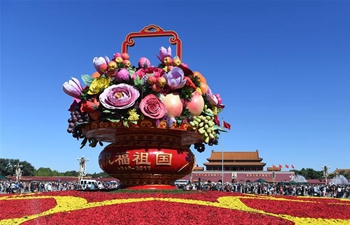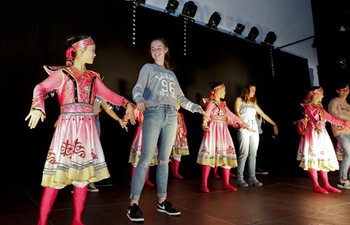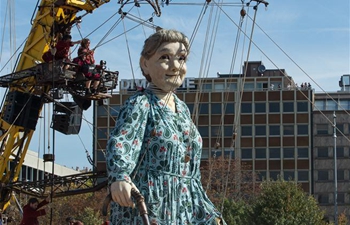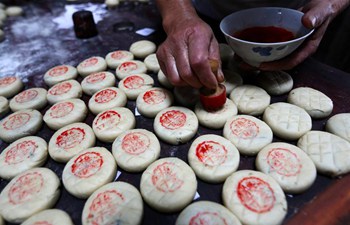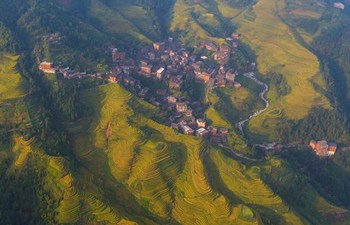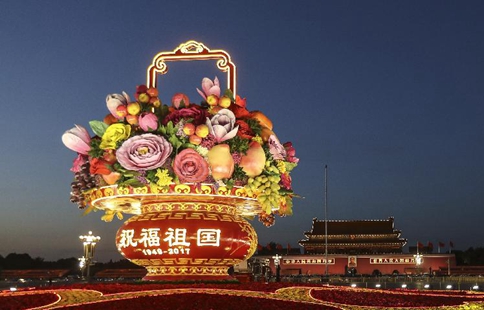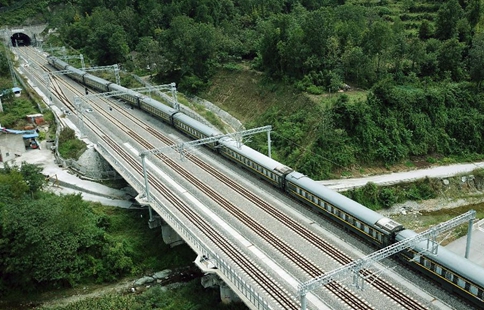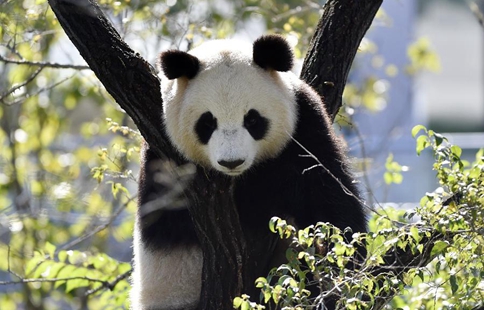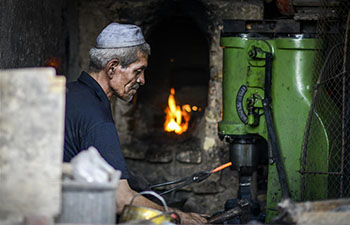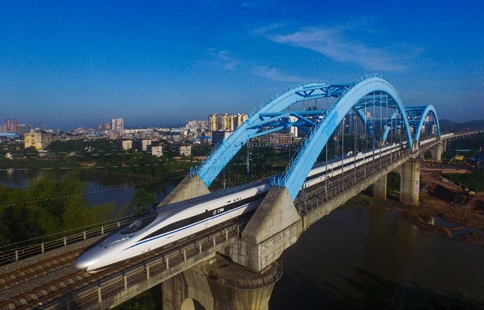BEIJING, Sept. 30 (Xinhua) -- For nearly four decades, Gao Yuan has taken the same photograph of people standing in front of Tian'anmen, the Gate of Heavenly Peace, in central Beijing. His photos have recorded the great changes that have taken place since he picked up his camera at the age of 17.
Almost all visitors to Tian'anmen Square in the heart of the capital have their photo taken in front of the magnificent gate. Guo, 55, is one of the photographers who helps visitors capture what he believes is a sacred moment in the life of a Chinese citizen.
Over the past 38 years, Gao has taken nearly 700,000 photos, enough to circle the square 40 times.
His first camera was a homemade Seagull that took black-and-white photos, now he has a digital camera. Over the years he has used around 100 different models, demonstrating each step in the development of the industry, he said.
Back in 1979, when China had just started reform and opening up, Gao began his career as a photographer for one simple reason: it was a desirable job. He earned 70 yuan per month in his first year, much higher than the national average income at that time.
Gao learnt how to take photographs and develop film from his parents at a time when most families couldn't afford a camera. "For many years, photography was an up and coming industry. You couldn't find a better job than being a photographer," he said.
One of the biggest changes Gao has witnessed was the privatization of the photo studio where he works. Before China's market-oriented reform gained momentum in the early 1990s, many factories and companies were state or collectively owned. When the studio was privatized many staff left, but Gao decided to stay.
Every day, he walks around Tian'anmen Square and taking pictures of the people around him, including police officers. "I feel like I'm not only a photographer, but a recorder of history," he said.
In the early 1980s, the subjects of his photos all dressed alike: Mao suits in colors ranging from black to gray or green. Then gradually jeans and skirts began to appear and people no longer dressed as formally.
"Now, you can see every kind of clothing you could imagine," said Gao.
His photos have also recorded the changes around the square from the flag poles and police uniforms, to sanitation vehicles, subway stations and underpasses.
But one thing has not changed. "Chinese people's deep respect for Tian'anmen. Every time I press the button, I feel the love in their hearts," Gao said.
Most of his clients are middle aged or senior citizens who grew up with a special reverence for Tian'anmen as a national landmark and a symbol of their generations, he said.
A 70-year-old veteran from central China's Henan Province came to Tian'anmen on his birthday and asked Gao to take his photograph. He remembers it was a rainy day, the man carried an neatly folded uniform, and said that it was his first time in Beijing.
A couple from southwest China's Yunnan Province asked Gao to photograph them on their golden wedding anniversary. He recalls that they held their marriage certificates while looking at the camera.
Gao said some senior citizens are moved to tears when watching the daily national flag raising ceremony on the square.
An elderly couple has been coming to Tian'anmen to have Gao take their picture every year for the last 16 years.
All of these memories have touched Gao's heart. "It is my honor to record their important moments," he said.
However, Gao has thousands of unclaimed photos. In the past it took a long time to develop film and print pictures, Gao often sent the photographs to customers in the post. It took up to a month for the pictures to be delivered to tourists from other parts of China, and some photos were returned to sender.
In the 1990s, people could get their pictures in two hours, but some who were travelling with tour groups couldn't wait that long.
Gao's daughter is helping him locate the owners of his unclaimed photos using Weibo, a Chinese social media platform.
Gao says he has kept all the unclaimed photos because he knows some of his customers came to Tian'anmen only once during their lives. "What if one day they want their photos?" he said.
A farmer in Henan Province contacted Gao via Weibo in September and said that he had a photo taken with his father in the 1990s when he was 18. Gao was able to give him a copy of the picture.
Not many of the photographs have been claimed, but Gao said he will keep trying to find their owners. "As people always tell me, the moment of being photographed in front of Tian'anmen is sacred," he said.




